Platforms in use at Maricopa schools for distance learning
Edgenuity
Founded: 1998Grades; K-12
Solutions: Core curriculum, credit recovery, exceptional learners, intervention, personalized learning, summer school, test readiness, virtual learning
CEO: Sari Factor
Headquarters: Scottsdale
Florida Virtual School
Founded: 1997
Grades: K-12
Solutions: Core curriculum, specials, credit recovery, collaborative, weekly videoconferences, extracurricular activities, NCAA-approved
Board Chairman: Andy Tuck
Headquarters: Orlando, Fla.
Google Classroom
Founded: 2014
Grades: K-12
Solutions: Class-organization platform, accessibility, simplifying collaboration, teacher communication, Hangouts, Quiz Locks
CEO: Sundar Pichai
Headquarters: Mountain View, Calif.
Odysseyware (now part of Edgenuity)
Founded: 1977
Grades: 3-12
Solutions: Competency learning, credit recovery, blended learning, social emotional learning, summer school, college and career readiness, AdvancED
CEO: Matthew Given
Headquarters: Chandler
PBLWorks
Founded: 1987
Grades: K-12
Solutions: Project-based learning, collaboration, communication, critical thinking, sustained inquiry
CEO: Bob Lenz
Headquarters: Novato, Calif.
Schoology
Founded: 2009
Grades: K-12
Solutions: Virtual learning, class-organization platform, integration, simplifying collaboration, teacher communication
CEO: Jeremy Friedman
Headquarters: New York City, N.Y.
Sequoia Choice Arizona Distance Learning
Founded: 1998
Grades: K-12
Solutions: Home-based distance learning, early college credit, competency credit, benchmark testing, AdvancED, NCAA-accepted
President and CEO: Mark Plitzuweit
Headquarters: Mesa
It won’t be like fourth quarter.
That is the word from Maricopa schools launching a most peculiar year amid coronavirus. Most are starting classes online until in-person instruction can begin. New levels of accountability are part of the expectations.
And the schools, district and charter, are trying to set up teachers to succeed so the students may succeed.
“I want to make sure our teachers feel supported and not overwhelmed in this. It’s all new, we’re all navigating these waters together,” said Christine Dickinson, technology coordinator for Maricopa Unified School District. “We expect they will need support, and that’s why we’re here.”
At MUSD, online education started July 30. For now, the district plans to return to in-person classes Sept. 8.
“We are hearing positive reports about the live online instruction with our creative MUSD teachers,” Superintendent Tracy Lopeman, Ed.D., said after the second day of school. “They are building relationships, creating routines, and helping parents and students become comfortable with this platform.
“When issues arise, we address each one with a personal touch. Our highly qualified technology specialists are working around the clock to meet the demands of the shift to 100% online/distance learning.”
PLATFORMS
At MUSD, “synchronous” is the word of the year. Students and their teacher are online at the same time and communicating in real time.
Over the years, programs have been established that engage students in distance learning, from blended-learning programs at the middle schools to Ram Academy at Maricopa High School. The tech department could see what did and didn’t work well for the district’s goals.
On top of that, exquisite timing had the district able to supply the devices necessary to make virtual learning a reality, so to speak. That was because voters chose to increase their own tax bill to get the students more technology. The district now has five technology integration specialists, as well.
“We’re actually in a good spot. We’re very, very thankful that we’ve had a few years to build up,” Dickinson said. “It would be a different scenario without our override.”
Ram Academy, a credit-recovery option for high schoolers, has already been using the platform Odysseyware and will continue to do so. Odysseyware was recently purchased by Edgenuity. MUSD like what it saw in Edgenuity and chose it for the new Maricopa Virtual Academy, which was created before the COVID-19 pandemic.
They opted to continue that license down through sixth grade.
“[Curriculum Director] Mr. Wade Watson and I, this past winter, went through the Maricopa Virtual Academy application process with the state to become an online academy,” Dickinson said. “At that point in time, we knew we would be moving forward with Edgenuity anyway, so that did put us in a really good spot to expand down as far as we could to sixth grade with that license. We were very fortunate that we were very proactive because of the needs of our community anyway going online.”
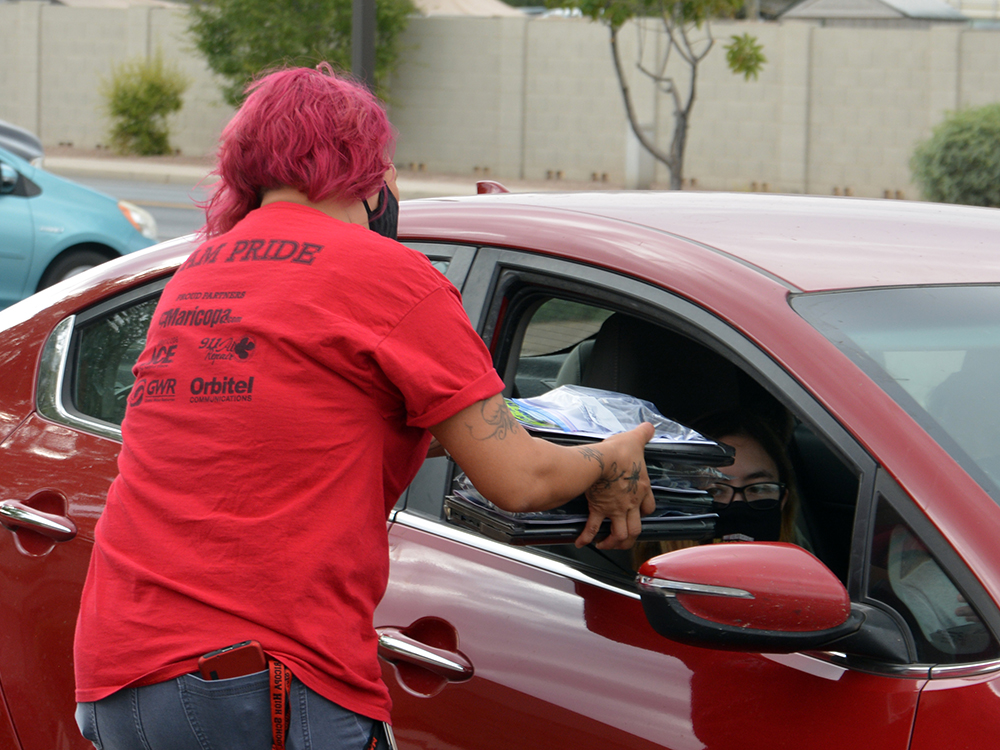
For kindergarten through fifth grade, MUSD is using the Florida Virtual School platform.
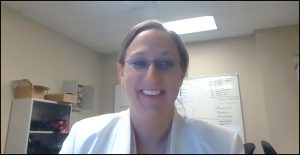
“We felt like Florida Virtual best aligned with our scope and sequence in our district,” Dickinson said.
Mostly remotely, MUSD teachers went through robust training on the platforms. For it to work, classes must stick to the scope and sequence so there will be a flow from online into the classroom when the time comes.
Teachers have the option of teaching from their classrooms. Also, “for the first time in MUSD history,” Dickinson said, teachers can take their devices home.
At Sequoia Pathway Academy, a charter school, the administration feels fortunate its mother company Edkey LLC already has long experience in remote learning through its Sequoia Choice Arizona Distance Learning.
In a letter to parents, CEO Mark Plitzuweit said the program now “can be used as support for an educational ‘stop-gap’ to get the school year started and to provide additional training to our campuses as we start our year off in a distance learning mode.”
Lesson plans are meant to be engaging and teacher-led.
Pathway starts Aug. 4. Secondary Principal Markchele Kamson said teachers are concentrating on that gap to have all students on the same page as the school slowly rolls out its plan to get back in the classroom.
“Virtual learning, we still have supports for all student groups, special education, ELL, all of them. And basically, we are doing professional development training for teachers when they come back,” Kamson said. “We’re actually targeting so we can deal with this gap that we have, but we’re very intentional with our approach.”
Legacy Traditional Academy, a charter school, will be 100% online through Schoology. Classes start Aug. 5. When in-person teaching is allowed, students can choose whether they wish to continue online, go to class or use a hybrid model.
Attendance is tracked by monitoring students’ daily login. After Aug. 17, the assumed date to get back to brick-and-mortar teaching, students will have a week to decide what model they want for the rest of the semester.
Through Schoology, students will have instruction on core courses like math, phonograms, spelling, reading, writing, grammar, social studies and science, Superintendent Nicole Kirkley told Legacy parents.
Assignments will be delivered online rather than in physical packets.
“We have a full platform, very different from fourth quarter, where all of our curriculum is built out with videos, the textbook, activities, discussion posts, quizzes, tests, much like you might see in a college learning environment. However, very interactive and catered toward our young students,” Kirkley said.
Using Google Classroom, Heritage Academy, also a charter, has started its second year by adding a senior class. Students were allowed to opt for online for the rest of the semester even after the state allows campuses to open.
Jared Taylor, chairman of the HA board, told parents their feedback after fourth quarter informed their decisions for the new school year.
“We will be keeping the good and improving in areas we were not as strong,” he wrote in a companywide letter.
Debuting this year, A+ Charter Schools is project-based learning for grades 7-10. To open Aug. 3, the charter is using PBLWorks as its virtual teaching model. When allowed to come onto campus for classes, student will have full in-person and hybrid models.
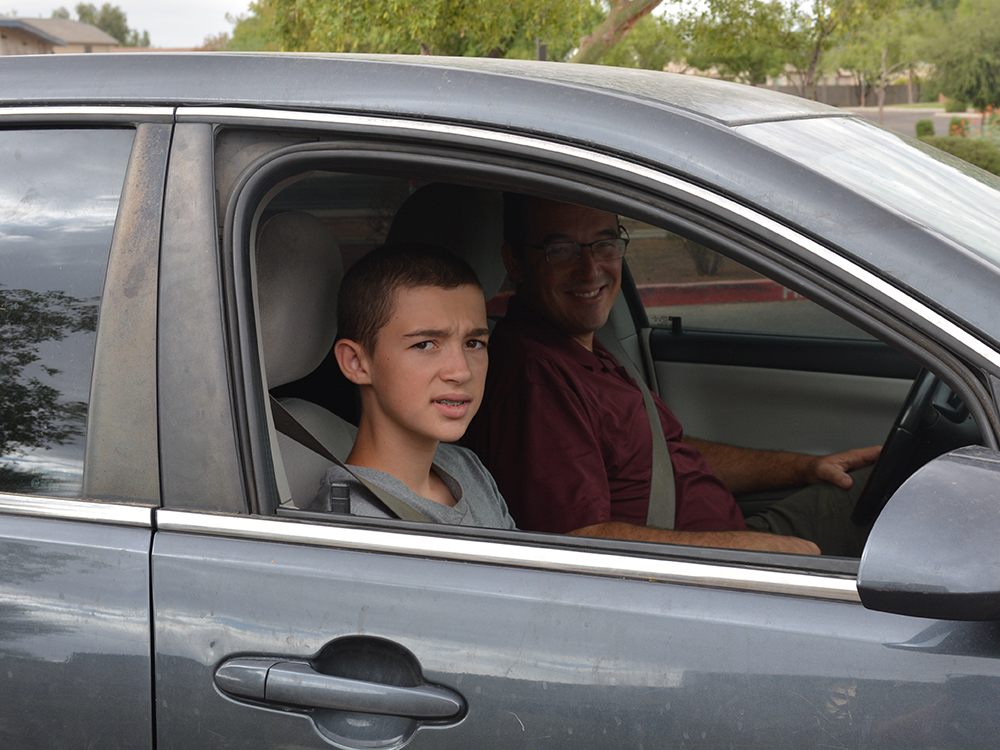
STAYING IN TOUCH
The relationship between teachers and their students will look different from the fourth quarter, according to MUSD’s distance-learning plans.
“There are going to be regular communication expectations, whether that be daily synchronous instruction, frequent emails home, frequent phone calls, blackboard messages,” Dickinson said.
The district has a Blocksi tool that can monitor what’s happening on students’ screens to provide support.
“Synchronous teaching will change – we did not have that feature available in April and May to our families,” Dickinson said. “There will be daily synchronous instruction happening, so a live teacher will be meeting with their classes. Additionally, we are asking that those lessons be recorded, because we do have families that are working families, and we know that we need to have these lessons available for our students at any time of the day.”
Dickinson, a former kindergarten teacher, emphasized the value of having a live teacher instead of just a software program for classes.
“There are just a lot of personal touches that teachers bring to the classroom that we’re trying to embed along with the outline from providers,” she said. “We can build upon that internally with personal touches from every classroom teacher building in enrichment opportunities.”
Teachers are expected to stay connected with each other, too, through regular virtual meetings. The success of the distance-learning program leans on teachers being on the same page with administration, staff and their students, and sticking to the scope and sequence.
“We’ve got a great plan, but that communication is key, though,” she said.
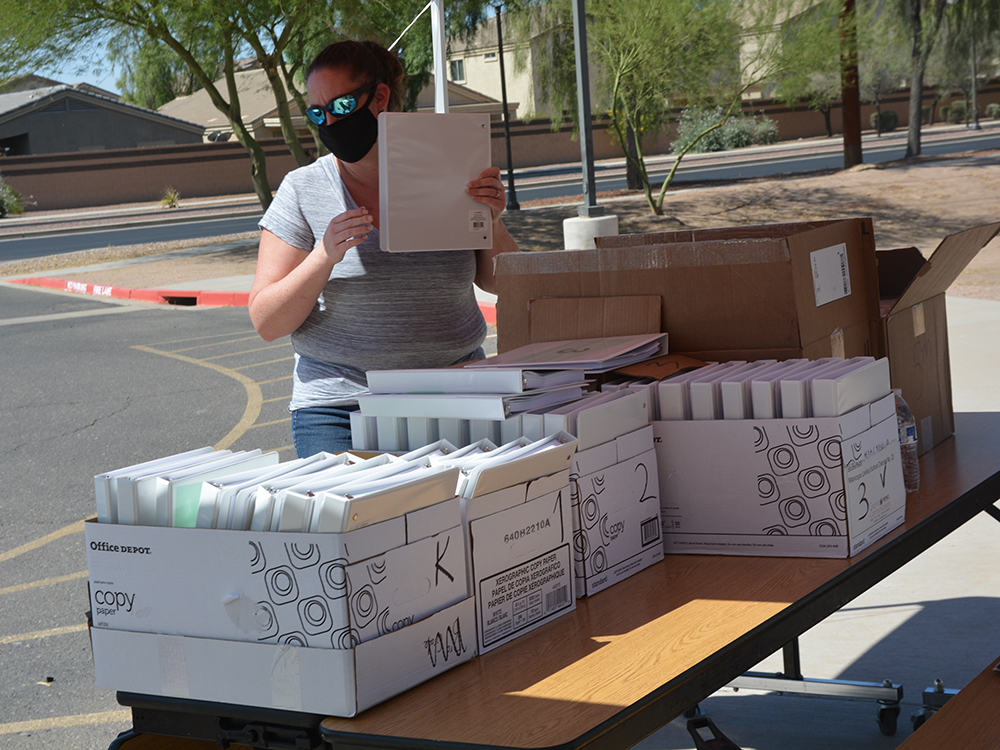
REACHING ALL STUDENTS
The youngest learners were a focus of concern last year. Keeping kindergarteners and first graders tuned in, engaged and learning was labor-intensive for parents. As the parent of an incoming first-grader, Dickinson said that was one of the first things she looked at.
Florida Virtual was chosen by MUSD because of its ability to accommodate those children. And the only physical supplies required are available in a typical home.
“They are able to listen through that platform; they are able to watch through that platform. But there’s also the principles that go along with it, the pencil and paper practice with virtual classes and collaborative lessons within the classroom with their peers,” Dickinson said. “Obviously, there’s no physical touching, but … it was just more specialized for them. Almost gamified with some of their activities.”
She said Florida Virtual and Edgenuity accommodate special education, allowing it to continue to be a “push-in” model. New Exceptional Student Services Director Teri Louer and the district’s program specialists have talked through the process with resource teachers to maintain the connection.
Meanwhile, the Career and Technical Education Department at MHS, which ranges from computer repair to welding, has different virtual models. New Director Marlene Armstrong was on Google Classroom building out those courses. “They have different laptops with specialized software for their courses,” she said.
MUSD is well aware of the danger of learning gaps. There was investment in more interventionists. IT has also been open to more programs brought to them, especially for specialized teaching. When a speech pathologist suggested software she saw at work in another district, Dickinson said, “Absolutely.”
“We know that we will need small-group instruction to meet the needs of all of our students.”
SECURITY
MUSD upgraded to Google Enterprise knowing that student information would be going home with the devices. In some cases, that laptop might be the only device in the household, opening up the possibility that someone else in the home might use it for their own business, which is not encouraged.
“That is one of the reasons that we did upgrade,” Dickinson said.
MUSD also invested in CrowdStrike to limit security breaches. There have been four reports since April. A breach shuts down the computer and automatically sends a security report to the IT team, letting them rectify the issue.
Blocksi also notifies the team of inappropriate searches, which may go to the counseling department or administration if deemed necessary.
HOWDY, PARTNER
To make virtual classrooms work, no matter how much synchronicity is involved, MUSD is leaning on two pillars – teachers and parents. Parents are offered training on the platforms to better understand what is happening so they can help their kids.
“We know that their world has been flipped upside down,” Dickinson said. “I mean, my living room became a classroom. And as a former teacher, I was still trying to figure out how that looks. And now with me back at work full-time, my husband is figuring out how that looks.”
Promoted on the district website, the parent training will be uploaded to YouTube in English and Spanish.
“We’re hopeful that parents are feeling supported with the amount of interaction between home and school, even though school is on a computer screen.”
The additional tech specialists are expected to be a boon to the process, especially for teachers. Dickinson said she wants the faculty to have full faith in the team that is on the ground every day.
“They are former classroom teachers in MUSD,” she said. “’They know our curriculum, they know our devices, they know our kids, they know our families. They’re going to be a wealth of a resources.
“We are here to support at all times. They know our hours of support are 7 a.m. to 4 p.m. That is when our office is typically staffed. However, I will tell you right now, 90% of these teachers have my cell phone number.”
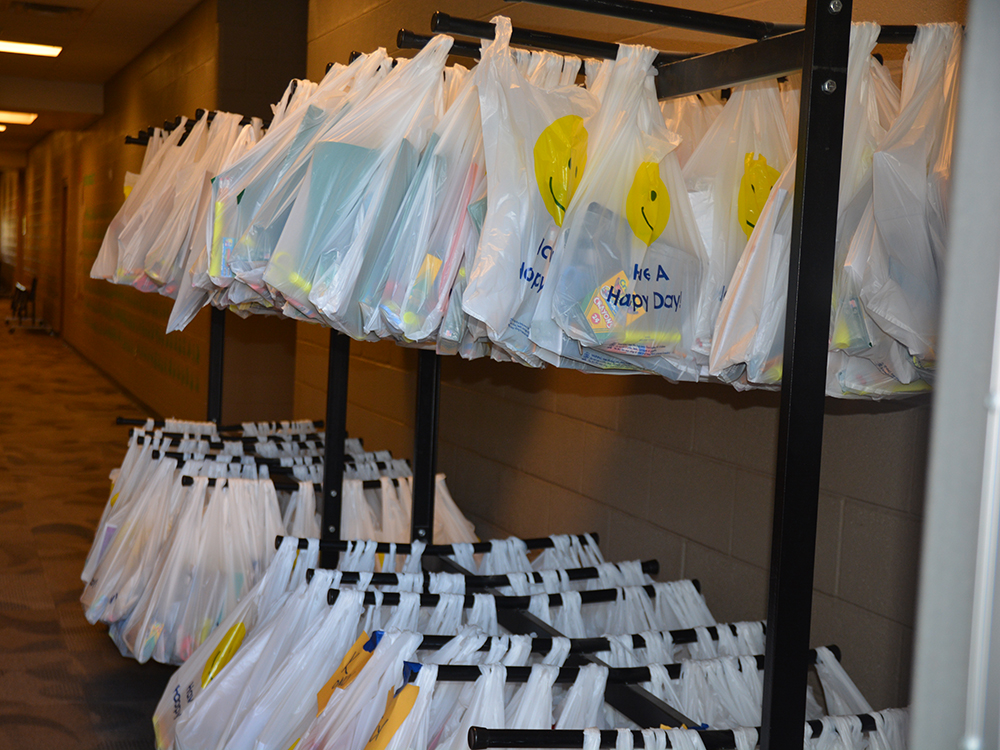
This story appears in part in the August issue of InMaricopa.

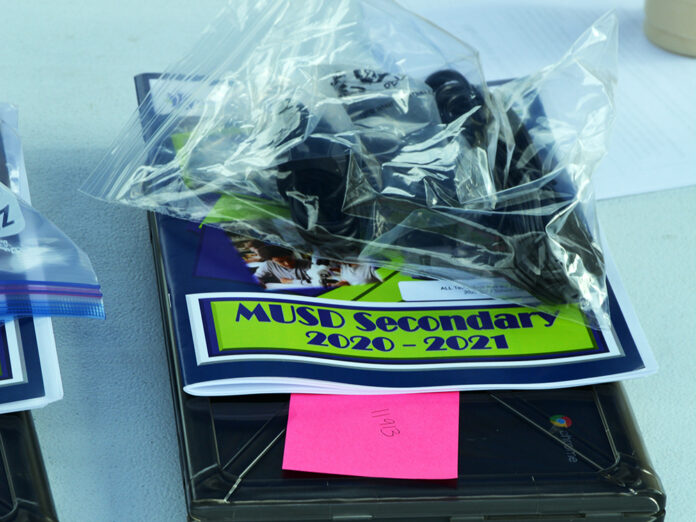

![Elena Trails releases home renderings An image of one of 56 elevation renderings submitted to Maricopa's planning department for the Elena Trails subdivison. The developer plans to construct 14 different floor plans, with four elevation styles per plan. [City of Maricopa]](https://www.inmaricopa.com/wp-content/uploads/2024/04/city-041724-elena-trails-rendering-218x150.jpg)

![Affordable apartments planned near ‘Restaurant Row’ A blue square highlights the area of the proposed affordable housing development and "Restaurant Row" sitting south of city hall and the Maricopa Police Department. Preliminary architectural drawings were not yet available. [City of Maricopa]](https://www.inmaricopa.com/wp-content/uploads/2024/04/041724-affordable-housing-project-restaurant-row-218x150.jpg)



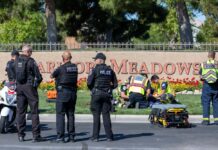






![Elena Trails releases home renderings An image of one of 56 elevation renderings submitted to Maricopa's planning department for the Elena Trails subdivison. The developer plans to construct 14 different floor plans, with four elevation styles per plan. [City of Maricopa]](https://www.inmaricopa.com/wp-content/uploads/2024/04/city-041724-elena-trails-rendering-100x70.jpg)

![Affordable apartments planned near ‘Restaurant Row’ A blue square highlights the area of the proposed affordable housing development and "Restaurant Row" sitting south of city hall and the Maricopa Police Department. Preliminary architectural drawings were not yet available. [City of Maricopa]](https://www.inmaricopa.com/wp-content/uploads/2024/04/041724-affordable-housing-project-restaurant-row-100x70.jpg)